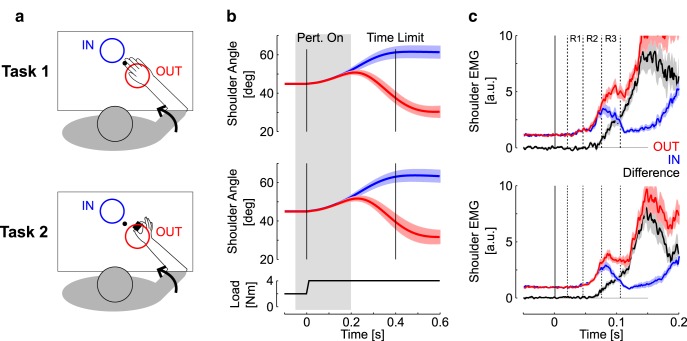Figure 1.
a, Illustration of the experimental conditions. Participants were instructed to reach for the goal target as soon as they felt the perturbation. Perturbation-evoked motion was directed either toward (IN, blue) or away from (OUT, red) the goal target. Only one target was displayed at the beginning of each trial. The two targets are shown for illustrative purposes. The task was performed with the hand strapped on a horizontal support (Task 1, top) or with an instrumented object held in precision grip (Task 2, bottom). In this condition, the hand and object were not supported against gravity. A flexor background load of 2 Nm was applied to pre-activate the shoulder extensor (posterior deltoid) and the analysis focuses on flexion perturbations. b, Average shoulder displacement ±SEM across participants in Task 1 (top) and Task 2 (middle). The applied load is illustrated in the bottom plot. The shaded area represents the time window expanded in c. Vertical lines illustrate the perturbation onset and time limit imposed to reach for the target (400 ms). c, Perturbation-evoked response of the shoulder extensor muscle (mean ± SEM across participants) with color code as in a and b. The black traces illustrate the paired difference in response across IN and OUT perturbation trials. Pre-perturbation (Pre) was from −50 to 0 ms and the early voluntary epoch (Vol) was from 120 to 180 ms. Vertical dashed lines delineate the different epochs of motor responses.

